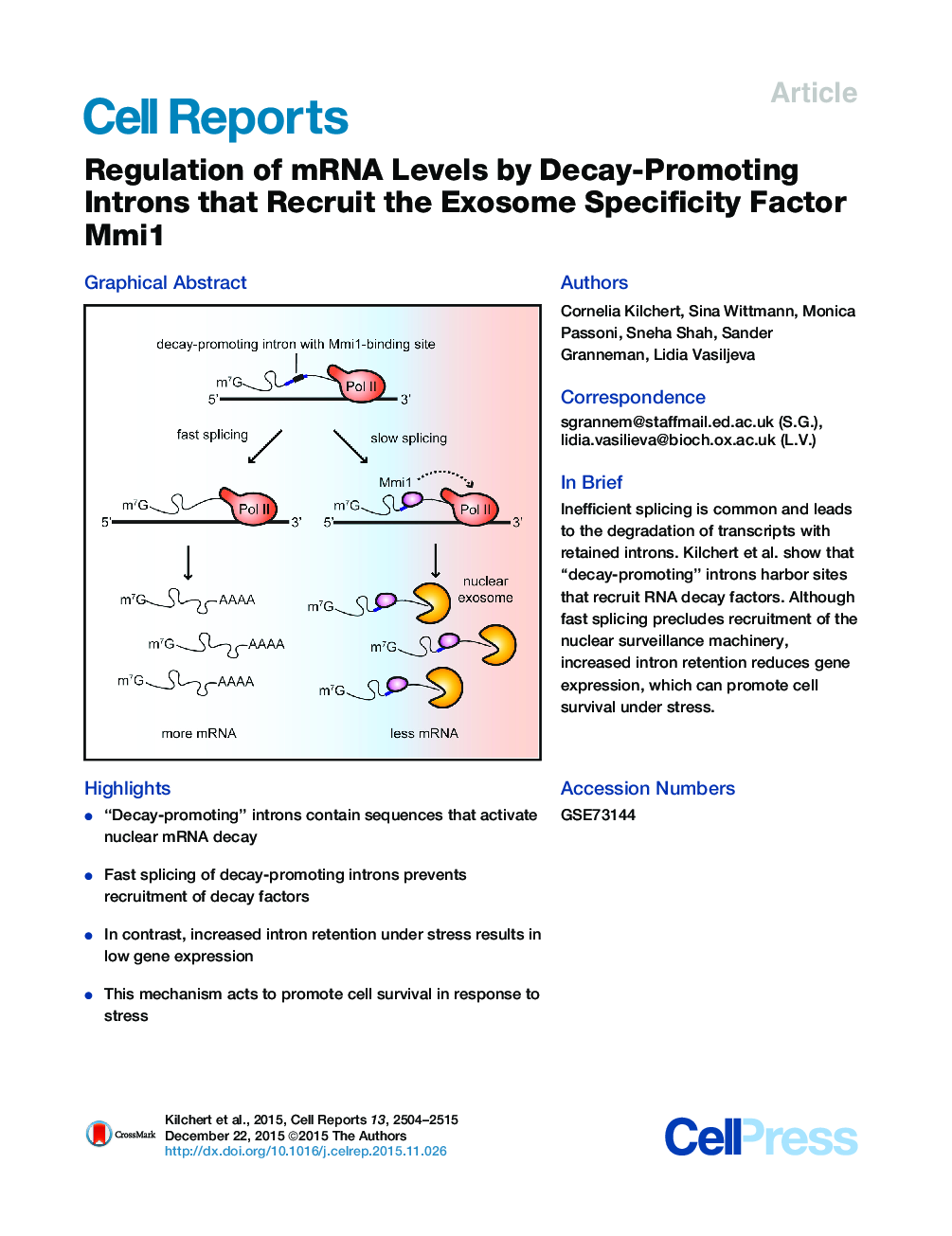| Article ID | Journal | Published Year | Pages | File Type |
|---|---|---|---|---|
| 2041848 | Cell Reports | 2015 | 12 Pages |
•“Decay-promoting” introns contain sequences that activate nuclear mRNA decay•Fast splicing of decay-promoting introns prevents recruitment of decay factors•In contrast, increased intron retention under stress results in low gene expression•This mechanism acts to promote cell survival in response to stress
SummaryIn eukaryotic cells, inefficient splicing is surprisingly common and leads to the degradation of transcripts with retained introns. How pre-mRNAs are committed to nuclear decay is unknown. Here, we uncover a mechanism by which specific intron-containing transcripts are targeted for nuclear degradation in fission yeast. Sequence elements within these “decay-promoting” introns co-transcriptionally recruit the exosome specificity factor Mmi1, which induces degradation of the unspliced precursor and leads to a reduction in the levels of the spliced mRNA. This mechanism negatively regulates levels of the RNA helicase DDX5/Dbp2 to promote cell survival in response to stress. In contrast, fast removal of decay-promoting introns by co-transcriptional splicing precludes Mmi1 recruitment and relieves negative expression regulation. We propose that decay-promoting introns facilitate the regulation of gene expression. Based on the identification of multiple additional Mmi1 targets, including mRNAs, long non-coding RNAs, and sn/snoRNAs, we suggest a general role in RNA regulation for Mmi1 through transcript degradation.
Graphical AbstractFigure optionsDownload full-size imageDownload as PowerPoint slide
